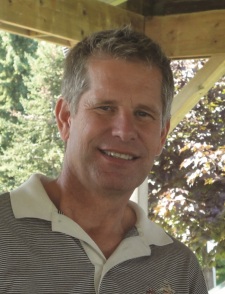Members of Duff’s were at a loss.
They tried pouring energy into child and youth programs; they worked to make their worship services more inclusive. Still, nothing substantial changed. The congregation was shrinking.
“We’re a rural church—we don’t have a large base to draw from in the first place,” said Rev. Marty Molengraaf, who has served the church in Puslinch, Ont., for the past 10 years.
Then came the Emmaus Project. Like the disciples whose eyes were opened to the traveller they met on the road to Emmaus, participants in the project were to consider where people in their communities might best encounter the resurrected Christ.
Organized by the national church, the Emmaus conference brought together representatives from presbyteries that had applied to participate.
“Emmaus helped us recognize Christendom is done. Just having a church service and inviting people to church isn’t going to cut it anymore. We needed to meet people out there in the community, rather than expect that if we have a good service, a great choir, dynamic worship, that if we have all the right programs, people are going to come,” said Marty, who was both a representative from the Presbytery of Waterloo-Wellington and a member of the design team.

Though they had a general direction, the church couldn’t see a clear destination at first.
“To me, that’s the wonder of how God works. When we were ready to step out in faith, then we were able to see opportunities we may not have seen if we weren’t ready.”
One such opportunity was campus ministry at the university in nearby Guelph, where a half-time chaplaincy position was available.
“We always dreamed of engaging the youth in our community—going beyond the youth programs most churches have and finding a way to engage youth where they’re at. We wanted a model where we could enable youth to find belonging and identity within the community they lived in— and then recognize the church as part of that community.”
Marty applied. After he was chosen he and the congregation developed a unique agreement. Rather than pay Marty directly, the Ecumenical Campus Ministry would pay Duff’s for chaplaincy services. The congregation would, in turn, commit to making campus ministry an integral part of their congregational ministry.
With the money they are paid, the church can employ a youth engagement worker and a parish nurse who focuses on seniors. During regular luncheons at the church, seniors receive health education and sometimes free consultations with a pharmacist, optometrist, or representative of the Canadian Hearing Society. Marty continues as a pastor at Duff’s, though his hours are condensed.
“It’s a great idea for churches located in a university town,” said Clarence Swanton, an ECM board member.
The church contributes in two key areas: food and administrative support.
Every week a core group of students meet. Half an hour before the bulk of attendees arrive, Marty and the student leadership team go over business items and plan out larger events. Once the rest of the group arrives, they all share a vegan meal catered by members of the congregation.
Students share what Marty calls “ubuntu moments.” Rooted in an ancient African tradition, “‘ubuntu’ is almost synonymous with ‘Kingdom of God,'” said Marty. “It means caring for our neighbours as we care for ourselves. When someone is in pain we are in pain. When there’s happiness and joy we are affected by that, too.” After sharing moments where they experienced ubuntu, someone in the group makes a presentation on a subject seen from the perspective of ubuntu, such as animal rights, gender equality or interfaith dialogue. Then there’s an informal discussion.
As I shadowed Marty for a day on campus, I met some of the students on his leadership team. While they were hesitant to describe themselves as Christians, they were excited to participate in ECM—now renamed Campus Ubuntu—and encourage their fellow students to explore the world through the lens of ubuntu.
As Duff’s begins a “process of visioning” to plan for the future, they will be deciding if they have the capacity to set up three-year or five-year contracts for their parish nurse and youth engagement worker. They’re also pursuing community partnerships that could enable them to be less financially dependent on Marty’s chaplaincy position.
While Marty agrees Duff’s model is an innovative one, he seems less eager to prescribe it to other churches, recognizing that every church exists in its own context.
“I’m just telling the story. The key to the story is to say, ‘okay how can we be engaged with the people in our community?’ It doesn’t have to be chaplaincy. It doesn’t have to be parish nursing. This is our response to Emmaus. We’re hoping other churches have good news stories to share, too.”
Do you have an Emmaus story? Please share it with us.

